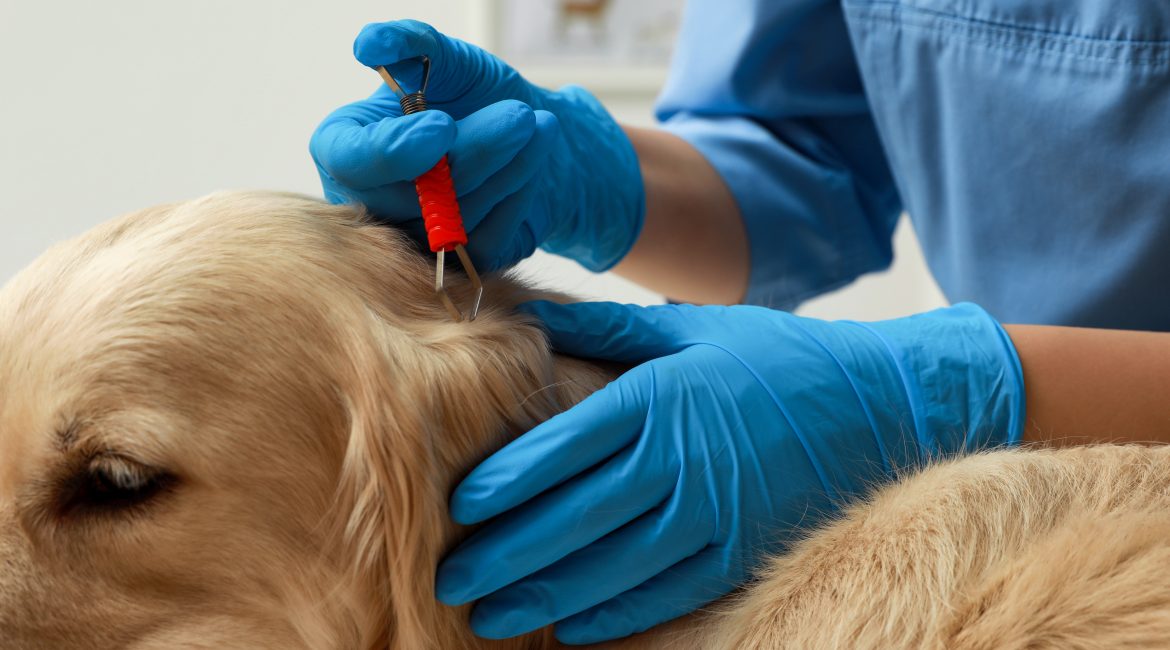Tick bite fever, also known as biliary, is a common disease among our precious pooches. Here’s everything you need to know about the disease and how to prevent it.
Nobody enjoys it when our furry family members get sick, especially not with something as serious is tick bite fever. Of course, having pet insurance that pays you before you see the vet of your choice is great for situations like that in helping to cover the costs, but as a dog-owner, it’s good for you to know more about the disease and how to recognise it in your dog.
What is tick bite fever?
Biliary is a serious tick-borne disease (meaning these pesky little critters cause the condition in our beloved furry besties), and it affects the red blood cells in dogs. It is caused by a tiny parasite known as Babesia canis. Biliary is a potentially fatal disease and kills thousands of dogs in South Africa each year.
Ticks transmit the parasite into the dog’s bloodstream through biting the skin. Once the parasite is in the blood, it will then divide and conquer and invade all the other red blood cells which results in these cells breaking down and causing a number of horrible symptoms in your dog. If your dog is infected, then it will take about 10 to 14 days from the time of the bite for your pooch to start showing symptoms.
Related: 10 Symptoms of Worms in Dogs
What are the symptoms of tick bite fever in dogs?
If you notice any of the below symptoms if your dog, then you need to take them to the vet immediately:
- Lethargy (listlessness, no energy, just lying around)
- Anaemia (evidenced by pale or white gums)
- Haemoglobinuria (dark or red-coloured urine)
- Anorexia (not eating)
- High temperature (fever)
- Jaundice (this is seen by gums turning yellow)
Is tick bite fever serious?
Yes, tick bite fever is very serious. So much so that it is a potentially fatal disease, meaning chances of survival are low. That being said, when the disease is diagnosed and treated as early as possible, the chances of survival significantly increase.
Your vet will typically prick your dog’s ear and take a sample of blood. He or she will study this to see if there are any parasites present. It is SO important that the disease is treated as quickly as possible.
Your dog may have to be hospitalised with a drip or even given a blood transfusion. There is a specific drug your vet will use to treat the disease and kill the parasite.
What treatments can be used to prevent tick bite fever?
Prevention is better than cure. There are a few different kinds of treatment that can help prevent the condition from occurring.
NexGard is great because it is a chewable tablet that you give your dog once a month. It tastes good and helps prevent ticks and fleas from latching on! Bravecto is also a good option and is given to your dog ever 9nine to 12 weeks.
Frontline Top Spot is squeezed onto your dog’s skin and also works very well. However, you need to make sure that your dog is not bathed for 3 days before and 3 days after the application to make sure it is properly absorbed into the skin.
It may sound quite costly to have to give your pet a tick & flea treatment every 4-12 weeks, but we (Oneplan) make these costs a little more affordable with the Onepet Online Pet Store, where Oneplan Pet Parents can get up to 25% discount on monthly pet supplies like tick & flea, food, grooming products, and more!
Dips can also be used in conjunction with the above-mentioned treatment options. Your vet or groomer can dip your dog, or you can buy a dip from your local pet store – just make sure you use it according to the instructions.
The thing with dips is that they need to be done on a weekly basis and if your dog gets wet, the dip is no longer effective. Dips stop fleas and ticks from biting your dog and also kill any present on the skin when dipping.
Discover: My dog got stung by a bee, what do I do?
How do these treatments help in preventing tick bite fever?
If a tick bites your precious pooch, then the tick will be poisoned by the treatment and will soon fall off and die. For an infection to occur, the tick has to be attached to your dog for 24 hours, so by falling off, there is not enough time to allow for the parasite to enter the bloodstream.
Some more info on tick bite fever and treating it
- Make sure you only use pet-specific products. This means that you should only use dog products for dogs and cat products for cats.
- Make sure you take your dog to the vet the moment you notice something is wrong.
- Prevention is better than cure – ensure that your dog is well looked after when it comes to killing ticks and fleas.
Your Pet Insurance Family,
Oneplan




